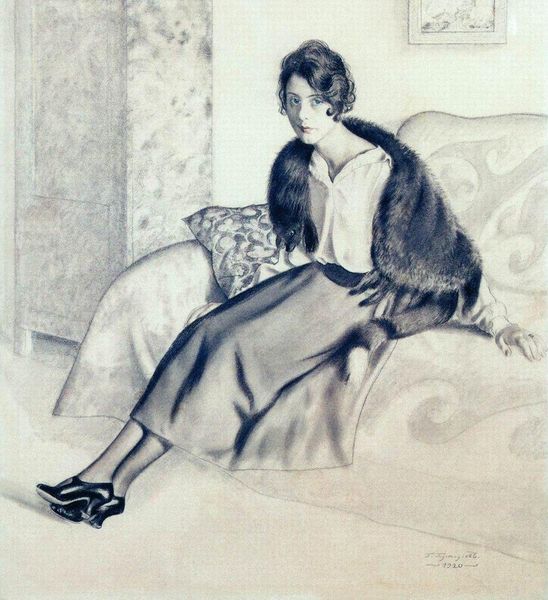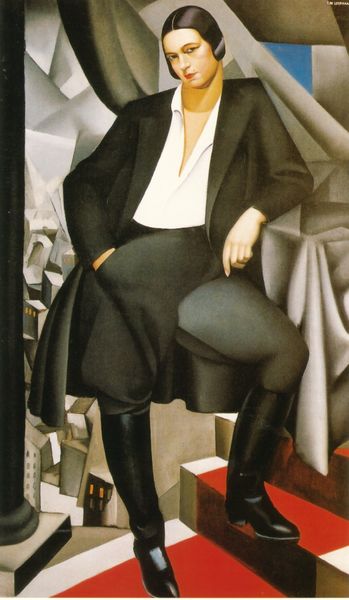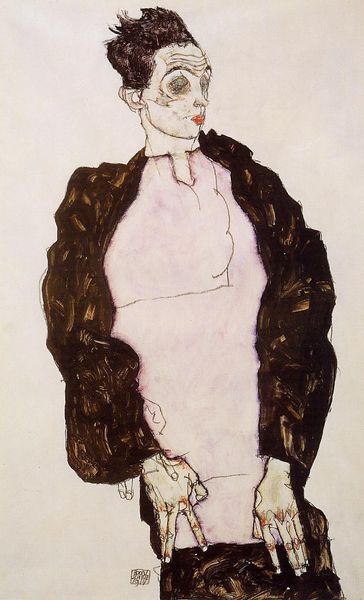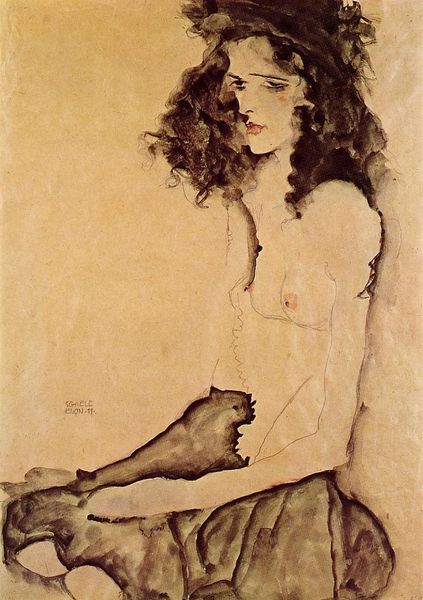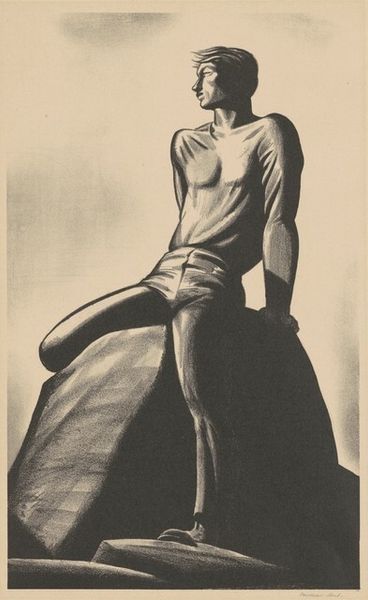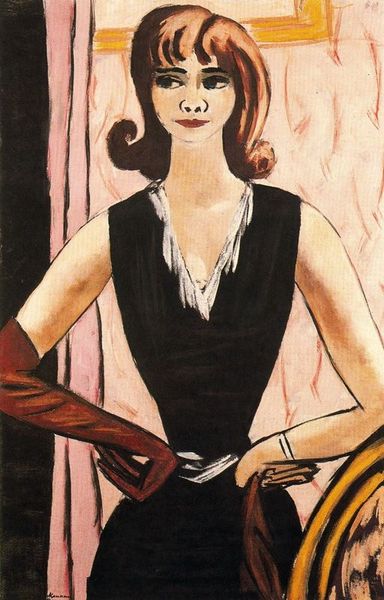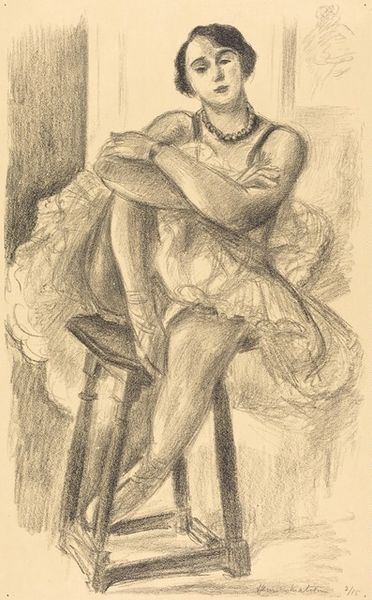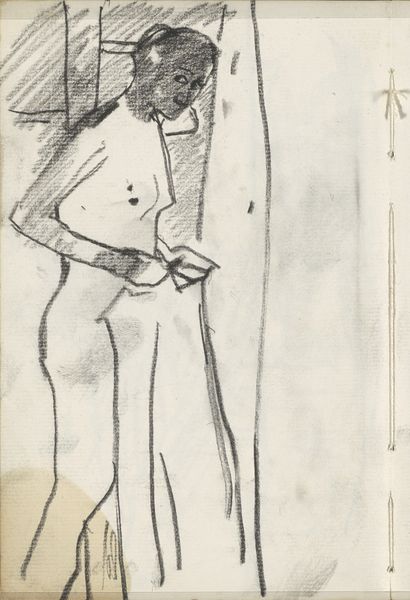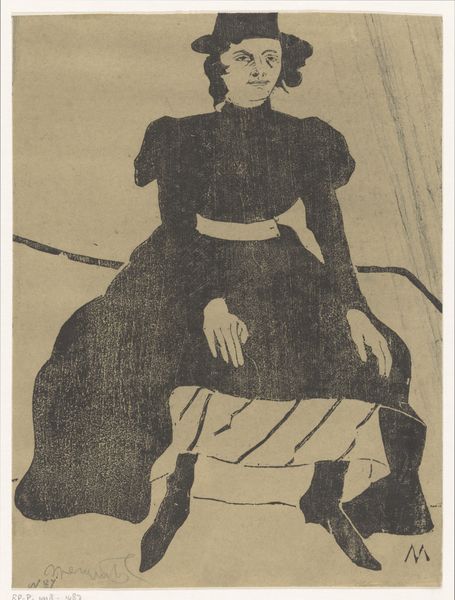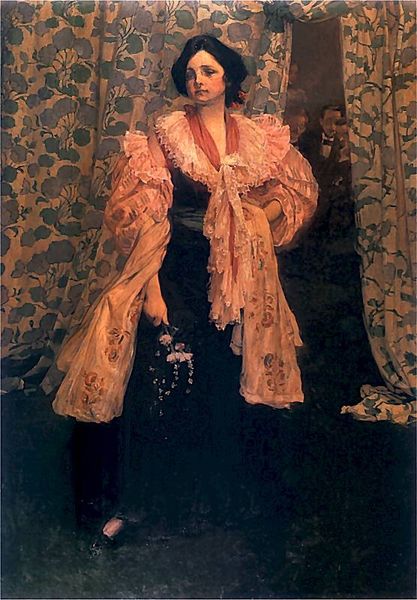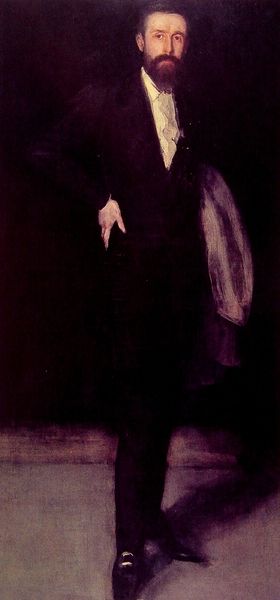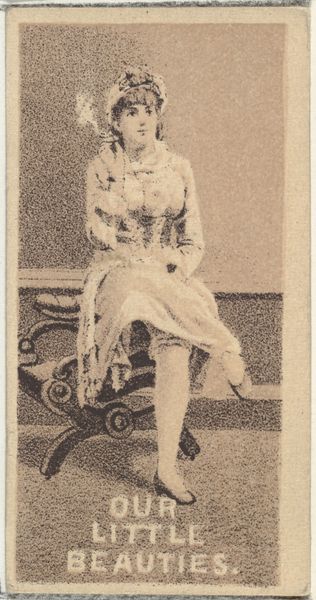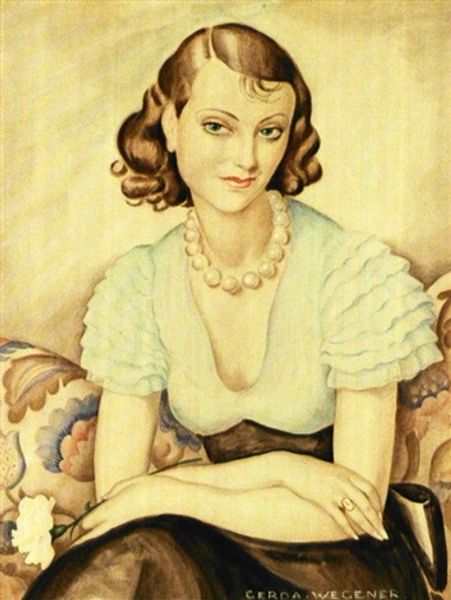
drawing, coloured-pencil, pencil
#
portrait
#
drawing
#
coloured-pencil
#
oil painting
#
pencil
#
symbolism
#
russian-avant-garde
#
portrait drawing
Copyright: Public domain
Editor: This is Léon Bakst's 1906 portrait of Zinaida Gippius, rendered in coloured pencil. I'm struck by its androgynous presentation and languid pose—it feels very staged and defiant, but I am wondering what the artist tried to convey about the sitter. What do you see in this piece? Curator: The portrait, beyond its surface aesthetic, stages a crucial dialogue between gender performance and artistic expression in early 20th century Russia. Gippius, a prominent symbolist poet, cultivated an androgynous persona, challenging conventional notions of femininity. Bakst, embedded in the *fin de siècle* artistic milieu, was surely aware of these transgressive, almost confrontational elements within Gippius' constructed identity. Editor: So the artist is not simply capturing a likeness, but is commenting on identity through the pose? Curator: Precisely. Note the performative elements – the dramatic reclining pose, the carefully chosen attire. These visual cues signal a deliberate construction of self. This challenges us to think about the portrait, not just as an image of an individual, but as a representation of gender as something fluid and actively crafted. Also, consider Russia at this point of social upheaval: How might her defiance of traditional gender roles play into revolutionary ideas circulating through artistic communities at that time? Editor: I see, Bakst almost co-authored an expression of Gippius' challenging persona... How interesting to consider gender identity expressed that way, particularly within the context of that historical moment. I definitely have a deeper understanding now! Curator: I am glad that I shed more light onto the subject! We were able to see the artwork through the lens of societal transformations of the early 20th century.
Comments
No comments
Be the first to comment and join the conversation on the ultimate creative platform.
